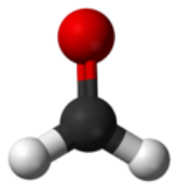 Over the years the ability of a buyer to do a thorough home inspection has vastly improved. Today I regularly recommend that along with a full house inspection, buyers also pay for a sewer scope (sending a camera down the sewer line to inspect for breaks and tree roots) and radon testing (we find it about 30% of the time). Now a new issue has come onto my radar: formaldehyde.
Over the years the ability of a buyer to do a thorough home inspection has vastly improved. Today I regularly recommend that along with a full house inspection, buyers also pay for a sewer scope (sending a camera down the sewer line to inspect for breaks and tree roots) and radon testing (we find it about 30% of the time). Now a new issue has come onto my radar: formaldehyde.
To be honest with you, before writing this post, I did not have a clue what it is. And, also being honest with you, I’m not sure that I completely understand it now. But I do know that it feels like the sort of issue that will become something that I need to have knowledge about so that I can discuss it with the buyers that I represent. So I am working to learn what I can. It’s pretty interesting stuff.
Formaldehyde exists naturally in our environment. It is made up of carbon, hydrogen, and oxygen. So, just like radon, we are all breathing it as we go through our day.
It is also man made. It is widely used in the manufacturing of so many products that to try to list them here would be unrealistic. To get a grasp of the magnitude of how much of it is used, consider that in 2003 it accounted for $145 billion in our economy, or 1.2% of our GDP. It is widely used in the products that are commonly used in the construction of houses. It is found in glues that are used to install carpets. It’s found in paint. It is a primary component of plywood, particle board, and fiber board.
It is measured in ppm (parts per million). Apparently it has a distinct odor that can begin to be smelled at .05 ppm. At .10 ppm it will begin to irritate your eyes and throat. While I did not find anyone making the firm claim that it is a carcinogen, I did find several sources, including the EPA dating back to 1987, calling it a “probable” carcinogen. It seems pretty clear that it’s not a good thing to be breathing this stuff for long periods of time or in heavy doses.
So what can you do?
First, an interesting tidbit. The products in construction of a home give off more Formaldehyde when the home is brand new. An EPA study found that a brand new house gives off .076 ppm on day one. But by day 30 that amount drops to .045 ppm. Also, heat and humidity contribute to the “off gassing” of formaldehyde. For every 10 degrees of temperature increase, the formaldehyde “off gassing” doubles. So perhaps moving into a new home after 30 days, and then keeping the house cool in the summer and not too overly heated in the winter, would be something to take into consideration.
You can also find a builder who uses “exterior grade” pressed wood products that are made with phenol instead of urea resin. It would also make sense, if you can afford it, to splurge on cabinets and flooring made with real wood.
Some good news is that our Federal government passed a law July 7, 2010 that requires that the use of formaldehyde in plywood, particle board and fiberboard not have emissions greater than .09 ppm. This law goes into affect January 1, 2013.
So how do you know if formaldehyde is a problem? Like I said, this issue isn’t really on people’s radar just yet. None of the well-known environmental companies in the area are offering formaldehyde testing. I did find one company, a company I have never used so will not promote, that is offering this test for about $200. I also found several websites that sell test kits for about $100. I’ll let you do your own google search to find them.
In some ways it bothers me that we have now found something else to worry about. But you are going to spend hundreds of thousands of dollars on a house, and then spend years of your time inside of it, it just seems like it’s smart to figure out what is good and not good about it. Because testing is not yet easy to obtain, it likely isn’t going to be commonly done at this point. But I predict it will come into common use as people’s awareness grows.
How do you fix it if you find it? That can be expensive if you are talking about replacing plywood and particle board. I imagine there may be products that can be painted onto surfaces to seal them. Again, this is a new area for me. If the demand is there on behalf of consumers, there is bound to be an industry that rises to meet the demand. I’d be interested in learning of any solutions that you may know of.
In the interest of full disclosure, here are my sources for this information:
www.en.wikipedia.org/wiki/Formaldehyde
www.prohousedr.com/formfact.com
www.epa.gov/oppt/chemtest/formaldehyde/index.html
Thanks for reading,
Dianne
